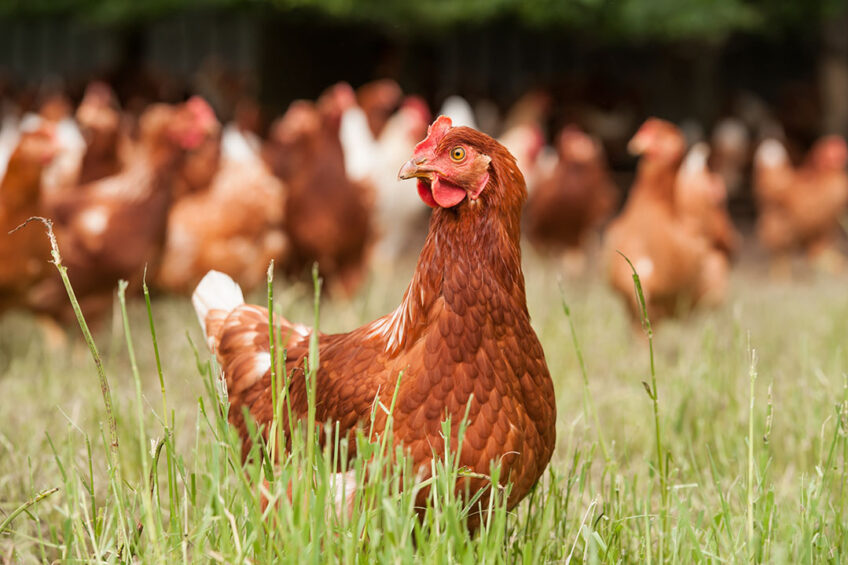Botanical vitamin D tailored for high performance

Vitamin D supplemented through feed is not directly available to the animal and must first be metabolised by endogenous enzymes. The next step in animal nutrition is supplementing vitamin D based on physiological needs, using phytogenic sources.
Bio-active vitamin D may be the solution as phytogenic sources have the benefit of being directly available.
”…supplementation of vitamin D via the feed becomes increasingly important…”
Vitamin D is an essential micronutrient required by all animals for the function and maintenance of calcium and phosphorus metabolism. Animals can produce vitamin D through adequate skin exposure to UV light. However, for livestock this is possible only to a limited extent under commercial production conditions, such as barn and cage farming. For this reason, supplementation of vitamin D via the feed becomes increasingly important to prevent adverse deficits. In addition, the requirements of modern and commercially-raised poultry are increasing due to high production levels and variable needs at different stages of production.
Metabolic pathway
In most cases, vitamin D supplemented through feed is not directly available to the animal and must first be metabolised by endogenous enzymes. The inactive vitamin D, also known as cholecalciferol, is first hydroxylated to calcidiol in the liver. Calcidiol is the form of vitamin D that circulates in the blood and is also known as the ‘storage form’. Subsequently, conversion to the bio-active form of vitamin D, calcitriol, takes place mostly in the kidneys. As calcitriol is the most active metabolite, it is essential to mediate calcium and phosphorus uptake from the gastro-intestinal tract, also for the mineralisation of bones and, for laying hens, eggshells.
Problems can occur when external or physiological factors inhibit the conversion steps towards active vitamin D (Figure 1). For example, in the starter phase broilers do not have a complete enzymatic system that supports hydroxylation in the liver, so the growing organism could face a vitamin D deficit.
Figure 1 – External and physiological factors which can influence the vitamin D metabolism

Conversely, in laying hens the production of bio-active vitamin D decreases with age due to metabolic deficiencies of the liver and kidneys. Consequently, both laying performance and eggshell quality decline towards the end of the production. The finding that higher cholecalciferol supplementation does not necessarily bring an improvement, while the use of the converted vitamin D metabolites does, highlights the importance of correct supplementation. Useful management tools to support the animal’s vitamin D metabolism may be to adjust the calcium source, e.g. administration of additional coarse particle limestone (e.g. oyster shells), along with constant attention to the Ca:P ratio of the diet, especially in the late production stages.
Effects of nutrition on feathering
Diet nutrient profile, feed intake/restriction, anti-nutrients and various feed additives can all influence feather development from early age onwards. Because of the high protein and amino acid content of feathers, these nutrients deserve the most attention. Read more…
Finally, certain phytogenic sources provide an excellent instrument for targeted vitamin D supplementation at strategic production stages. These phytogenic products contain the bio-active form of vitamin D, enabling tailor-made supplementation to meet the animals’ specific requirements.
Targeted approach
The complex and sensitive metabolism with the involvement of several organs means that supplying large amounts of vitamin D in the feed does not necessarily translate into increased performance, as it will not necessarily ameliorate possible Ca and P-related disorders. In other words, the vitamin D content of the feed on its own provides no indication of how well the animal can make use of it. In laying hens, however, the vitamin D content of the feed is fixed throughout the entire production. This does not reflect the decreasing metabolic functioning of the organs in the later stages of laying. Additional stress factors inhibiting calcium and phosphorus metabolism, such as heat stress or glucocorticoid release, also affect the utilisation of vitamin D.
Managing heat stress in poultry
Rising global temperatures and the undeniable fact that modern, highly productive poultry breeds are more prone to heat stress, is a challenge for the industry. Fortunately, innovative plant-based nutritional solutions now provide the opportunity to stabilise broiler and layer performance during hot weather. Read more…
In these challenging situations, bio-active vitamin D from phytogenic sources may be the solution. This form has the benefit of being directly available to the organism. Furthermore, it can be simply used ‘on top’ of the standard cholecalciferol in the feed. Consequently, organs stressed by the high production level are relieved and a continuous vitamin D supply is guaranteed.
It is crucial to avoid overdosing when supplementing bio-active vitamin D…
However, when supplementing bio-active vitamin D it is crucial to pay attention to the correct amount, to avoid overdosing. The benefits of the bio-active and plant-derived form of vitamin D have been scientifically proven. Studies show improved eggshell quality, maintained laying performance and modulation of the immune system, resulting in improved feed conversion (Figure 2).
Trend towards plant-based
There is an increasing trend in animal nutrition towards the use of natural additives to target the specific needs of the animal. These natural strategies include the use of phytogenic vitamin D sources to offer a tailored supply for high-performance livestock. Phytogenic vitamin D provides an optimum means of maintaining and even raising productivity in times of high metabolic pressure or increased stress and thus appears to be an attractive new tool for use in animal nutrition.
Author:
Murat Devlikamov, Phytobiotics












